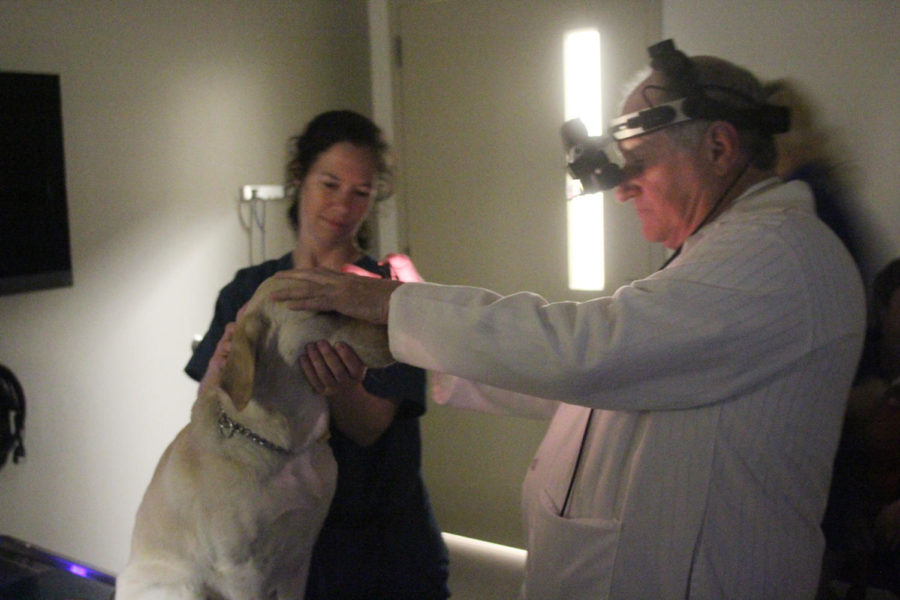Safety falls in sight of service dogs
June 3, 2013
It comes down to safety.
For some, safety is thought of as looking both ways before crossing the street or stopping completely at a stop sign. For Clay Gurganus, safety lies in the eyes of his dog.
But Gurganus’s dog is no ordinary dog. It is a guide dog from The Seeing Eye; a dog for the blind.
Clay and his wife Jamie Gurganus are both blind and both have guide dogs from The Seeing Eye. For them, the eye sight of their guide dogs is of the utmost importance.
“The thing I tell people [what] a Seeing Eye dog does is keep us away from objects,” Clay said. “The biggest thing they’re taught is to keep us from tripping over a curb or falling down the stairs.”
In order for guide dogs, and all service animals like the ones the Gurganus’s have, to have near perfect vision, they must be checked on at least twice a year.
The National Service Dog Eye Exam is an event put on by the American College of Veterinary Ophthalmologists each year. At the event, people with any kind of service dog may come in for a free eye exam.
“It is nice to offer it because some people with guide dogs might not be able to afford it,” Jamie said. “It’s for all service dogs.”
The College of Veterinary Medicine at Iowa State put on the event for the first year since Dr. Rachel Allbaugh has been at the university.
“I was partially involved in getting the program to come to Iowa State this year,” Dr. Allbaugh said. “All three of us ophthalmologists here at Iowa State have been participating in terms of donating our time and services.”
Dr. Allbaugh said one of the perks she gets from donating her time to assisting in the eye exams is getting to meet with the people that own the service dogs.
Coming from Kansas State University, Dr. Allbaugh said doctors weren’t allowed to give free eye exams to service dogs because of state law regulations.
“Kansas State wouldn’t allow us to participate in the event because state legal regulations said ‘it was giving away free services of a tax payer university,'” Dr. Allbaugh said.
Clay said the National Service Dog Eye Exam event provides a unique aid to those with disabilities that may not be covered like other handicaps are.
“This is like my wheelchair. I have this dog not as a pet but as a working animal,” Clay said. “Insurance would pay for my wheelchair to be tuned up, but insurance won’t pay for my Seeing Eye dog to be tuned up.”
However, when a dog can’t be ‘tuned up’ in a way Clay described, he said there has to be a right moment when the owner realizes it’s time to head in for retirement.
One of the Gurganus’s dogs has been retired, not because of a failed eye exam, but because of arthritis. Jamie said you can start to feel when a service dog has had enough.
If a service dog were to fail an exam, immediate retirement is not the only solution.
“The Seeing Eye would send someone out to judge her in traffic and to evaluate her in traffic,” Jamie said. “That’s the most critical thing.”
But it’s up to the owner to realize when a dog just needs sit back and take it easy for the rest of his or her life, Clay said.
“We realize dogs will work forever, but we have to be kind enough to say to them ‘you’ve done a great job, doing your job. Now it’s time to retire, just like humans,'” Clay said.
When regarding safety and the health of their dogs, the Gurganus’s both agreed the National Service Dog Eye Exam has helped out not only them but has potentially saved the lives of many others with the need of a service dog.
“It’s very important for these dogs to see well,” Clay said. “They keep us safe when we’re crossing the street. They keep us safe when we’re riding the subways in New York City. They keep us safe when we’re flying on planes. Their vision, is the utmost important thing.”







